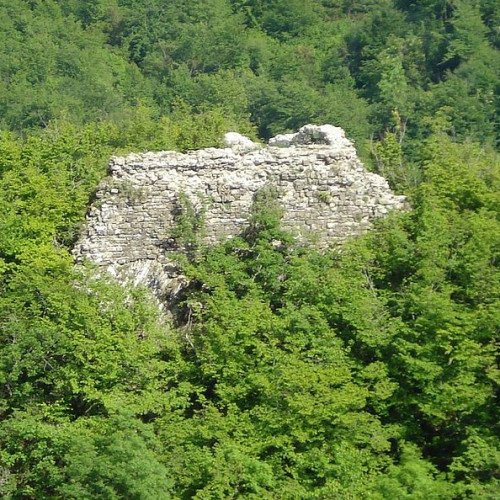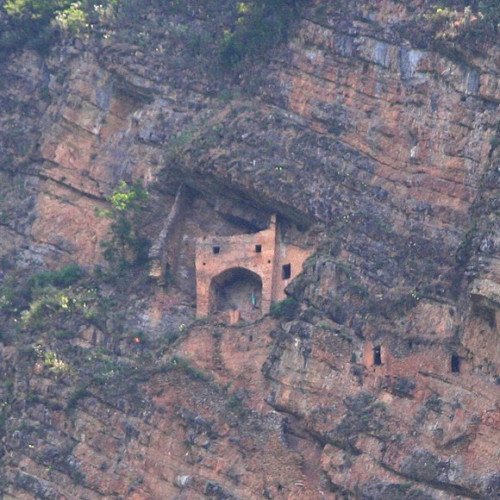Castles of "Azerbaijan" GALARSAN-GORARSAN vs FAIRY CASTLE

GALARSAN-GORARSAN
Galarsan-Gorarsan (Azerbaijani: Gələrsən-Görərsən) is a fortress in Azerbaijan, built in the Middle Ages, ruins of which remain on the coast of the Kish River, about 4 kilometres (2.5 mi) from Shaki city, on the summit of Garatepe Mountain. Construction of the fortress is dated back to the 8th or 9th century. Gelersen-Gorersen was thoroughly consolidated and was used for defence. In translation from Azerbaijani language the name of the fortress means “will come-will see”. An interesting episode from the history of Shaki Khanate is connected to it. When the ruler of Iran, Nadir shah, attacked Shaki Khanate in the 18th century, Haji Chalabi, khan of Shaki Khanate, secured in the fortress. When Nadir Shah offered him to give in, Chalabi answered: “You will come and see”. Infuriate Nadir shah, who was not expected such an answer, decided to capture the fortress by force. In 1744, the shah approached the fortress with a great army, but couldn't capture it and fell back. Since then the fortress was famed as Gelersen Gorersen.
Statistics for this Xoptio

FAIRY CASTLE
Parigala (Azerbaijani: Pəriqala, literally Fairy Castle) is considered one of Azerbaijan's lesser-known archeological treasures and historical mysteries. The site consists of a limestone brick structure of three rooms with a window, built 300 metres up the side of a cliff in the foothills of the Caucasus Mountains near the village of Chardaghlar in northwest Azerbaijan. The structure is believed to have been built during the Caucasian Albanian period sometime between the fourth and eighth centuries. Few visit, as it sits in a remote part of Azerbaijan and requires much effort to access. The site includes a forty-metre stairway reinforced with oak beams and also a covered walkway. Local guides have erected a ladder to access the site, which requires considerable strength and mountaineering skill to access. The site is in a state of good repair, although the top of the stairway has been separated from the rock, perhaps by an earthquake. Wear on the limestone suggests that the structure was long inhabited. Parigala is a literal translation of "Fairy Castle", and Pari is also a female name. According to legend, Pari - a beautiful woman during the Genghis Khan (1155-1227) period - became the focus of a Mongol warlord who requested permission of her father that she join his harem. Pari had other plans. She had the castle built to allow her to flee the warlord and eventually she leapt from it to her death on the rocks below. It has more realistically been speculated that the structure was built as a monastery for harried monks during the early Christian period, although much archaeological research remains to be done to determine the origins of the site.